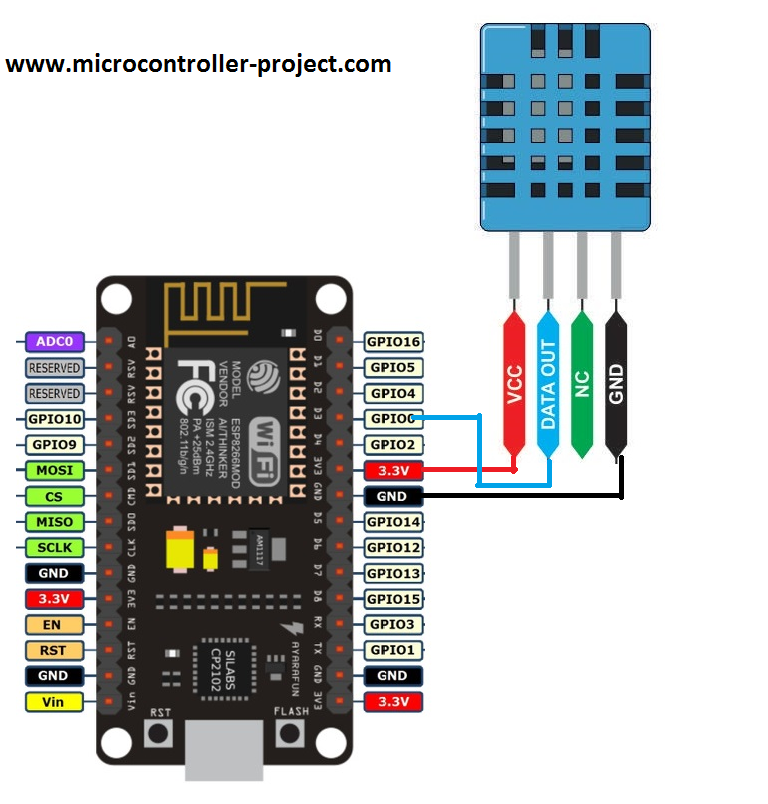Here we are using DHT11 a three pin sensor which is used to measure the value of humidity and temperature of surrounding. Here using DHT11 we take the data of the surrounding humidity and temperature now after taking the data we are going to upload this data to IoT platform, Here I am using thingsai.io platform to upload data of the sensor. Using this data you can predict the weather forecasting as we know that our great farmers also predict the weather just by looking at the clouds, it may be rainy or windy just like that getting data from this sensor we get an estimation of the condition of the weather.
DHT11 Pin for Module1. Vcc - Power supply 3.5V to 5.5V
2. Data - Outputs both temperature and humidity through serial data
3. Ground - Connected to the ground of the circuit
DHT11 Specifications- Operating Voltage: 3.5V to 5.5V
- Operating current: 0.3mA (measuring) 60uA (standby)
- Output: Serial data
- Temperature Range: 0°C to 50°C
- Humidity Range: 20% to 90%
- Resolution: Temperature and Humidity both are 16-bit
- Accuracy: ±1°C and ±1%
The DHT11 sensor is factory calibrated and outputs serial data and hence it is highly easy to set it up. The connection diagram for this sensor is shown below.
As you can see the data pin is connected to an I/O pin of the MCU and a 5K pull-up resistor is used. This data pin outputs the value of both temperature and humidity as serial data. If you are trying to interface DHT11 with Arduino then there are ready-made libraries for it which will give you a quick start.
If you are trying to interface it with some other MCU then the datasheet given below will come in handy. The output given out by the data pin will be in the order of 8bit humidity integer data + 8bit the Humidity decimal data +8 bit temperature integer data + 8bit fractional temperature data +8 bit parity bit. To request the DHT11 module to send these data the I/O pin has to be momentarily made low and then held high as shown in the timing diagram below
The duration of each host signal is explained in the DHT11 datasheet, with neat steps and illustrative timing diagrams
Applications- Measure temperature and humidity
- Local Weather station
- Automatic climate control
- Environment monitoring















Comments